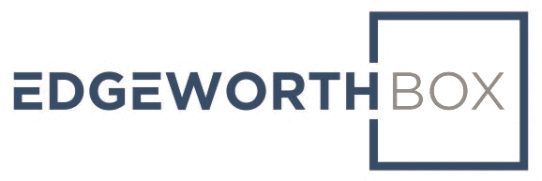Using reverse auctions to source inputs dates back to the Industrial Revolution. Buyers would use it to purchase commodities. Imagine purchasing a quantity of bricks. A brick is a brick is a brick. Hosting a reverse auction in which suppliers competed to provide bricks at the lowest price made sense. Price was the only variable dimension in this equation.
In this context, buyers and suppliers have an adversarial relationship. We call it a zero-sum game in which the gains of one party come at the expense of the other party. Buyers may be able to squeeze a price at which the supplier breaks even. Or suppliers can charge an artificially high price because nobody else bids.
Today, with the Request for Proposal (or Quotation or Information), many buyers continue to purchase goods and services this way.
We call it a reverse auction because there is one buyer and many suppliers. (In an auction, there is one supplier and many buyers.) Suppliers compete by offering to sell at a lower price.
Buyers select a supplier. Then, they negotiate a contract. Often these contracts have covenants on performance (“supplier shall”). Buyers see this as a contest over a limited amount of value. They believe it’s their job to obtain as much of that value for themselves as possible.
If the buyer is stringent enough, the contract becomes an exercise in compliance.
The procurement function is focused on the transaction. CFOs want to see cost savings. It makes sense. For a company with a 10% EBIT margin, $1 in cost savings is the equivalent of $10 in incremental revenue, ceteris paribus. But relationships are complex these days. Companies don’t purchase commodities; they buy differentiated goods and services. They don’t buy on a discrete basis; they purchase on a continuous, long-lived basis. Failure to buy the right solution from the right vendor can have persistent cascading consequences across the enterprise.
In the language of game theory, a transactional approach to acquisition is to play a one-period game when the company as a whole is playing an infinite-period game.
In the language of the CFO, the purpose of procurement shouldn’t be to obtain cost savings for their own sake; it should be to increase margin dollars.
The way to increase margin dollars is to raise the percentage margin by being more efficient, to lift revenue by bringing a better solution to market, or to do both. Intuitively, we know that we could get massive cost savings by purchasing inputs of low quality and poor product-solution fit, but the hit to revenue could be devastating.
If revenue drops because our customers think we sell a cut-rate product, then other fixed costs need to be amortized over a lower base. In turn, this means a lower percentage margin. A lower percentage margin on lower revenue translates to significantly lower margin dollars.
To focus on cost savings is tactical. To deliver margin dollars is strategic.
But the story isn’t over. It’s just beginning.
Three waves of disruption are hitting procurement successively.
Technology is evolving quickly. The pressure for “digital transformation” is immense. The end game for this piece is transactional efficiency. Many of these solutions answer the question: how can we execute our traditional process with less friction?
Globalization is under the gun as geopolitics rears its ugly head. Will we near-shore production and/or distribution? How reliable is our sourcing? Pressure on trade requires a new set of assumptions.
The final, most unpredictable force is the Covid crisis. What permanent impact will Covid have on the way we do business? How can we work remotely? How do we make the enterprise more resilient?
These three forces have brought into relief the fact that the enterprise today is not the company of the Industrial Revolution. We don’t buy commodities. We develop complex, long-lived relationships with counterparties, not in a chain, but in a network.
Covid has forced thoughtful CFOs and COOs to rethink the nature and importance of their relationships.
Make no mistake. These are relationships. They are alliances based on mutual benefit. If one side does well, then the other side does well. A relationship isn’t a zero-sum game; it’s a positive sum game in which one side does not win at the other’s expense.
People in a relationship collaborate to obtain a better joint outcome.
In our highly competitive world, this comes down to partnering on innovation. Getting to market faster. Getting to market with the better solution for the ultimate customers’ problems.
If digital transformation is about executing the traditional process more efficiently, then relationship-driven procurement is about developing a new way of buying goods and services.
The relationship is the objective. Get the relationship right and everything else follows.
One day (and for some leading companies that day is already here), we will do things differently.
In this version, procurement isn’t about one-off costs. It’s not even about the total cost of ownership. These are 20th century concepts.
In the 21st century, value derives from the total benefit of the relationship. A relationship doesn’t focus on complying with restrictive contractual covenants. It is built on trust, instead. With trust, the two (or more) sides can create the conditions for rapid, relevant innovation. By the way, with trust, costs can fall, too.
As Stephen M.R. Covey writes in “The Speed of Trust”:
“Trust always affects two outcomes – speed and cost. When trust goes down, speed will also go down and costs will go up.”
And:
“Compliance regulations have become a prosthesis for the lack of trust – and a slow-moving and costly prosthesis at that.”
In this post-Pandemic period in which “supply chain” has become a piece of jargon in the lexicon of those who know, Stephen Leider of the University of Michigan is correct when he states:
“A successful firm depends on the capacity, reliability, and the trustworthiness of its supply-chain partners.”
How many suppliers turned out to be capacity constrained during the lockdown? At some point, every company suffered from these restrictions. Yet, when tight capacity goes “on allocation,” it is the customers seen as partners who receive priority in the queue. Partners invest in capacity and capabilities to help the greater good.
Wouldn’t you, as a buyer, prefer to have a supplier who did that for you on faith, even before you committed? What kind of a signal do they send when they do so?
Leider talks of what he calls the “collaborative cycle.”
- Supplier invests in capacity and capabilities, including technology.
- Buyer rewards them with a higher price (sharing the benefit of the higher margin revenue the supplier’s investment is necessary in generating).
- Supplier delivers a high quality good or service to ensure margin/revenue maximization for the buyer’s ultimate sale to its customers.
How do you build trust? What does it look like?
In “A New Approach to Contracts” from the Harvard Business Review, the authors give some good suggestions:
- Have an agreement that governs the terms of the relationship, setting expectations and mechanisms for periodic evaluations and adjustments
- Focus on areas of overlap including goals, principles, and interests.
- Instead of trying to develop covenants around potential conditions, develop a partnership framework for how the parties will work together to overcome obstacles and exploit opportunities
- Figure out ways in which both sides can maintain alignment
A successful relationship is one in which each side accelerates the profitable growth of the other side. — EdgeworthBox is a platform for procurement.
EdgeworthBox’s digital transformation offers both transaction efficiency improvements and strategic relationship-driven sourcing. We bring tools from capital markets to improve the current approach to acquisition.
Suppliers can onboard easily, meaning that buyers can solicit a broader array of potential vendors than if they just solicit those with whom they have antecedent relationships.
Buyers and suppliers can access market intelligence more easily with our “market tape.”
Finally, buyers and suppliers can communicate, frequently and across multiple functions, developing the foundations for trust, with our social network. Whether you’re a procurement professional or a sale leader, we are looking for feedback on how to improve the process.




